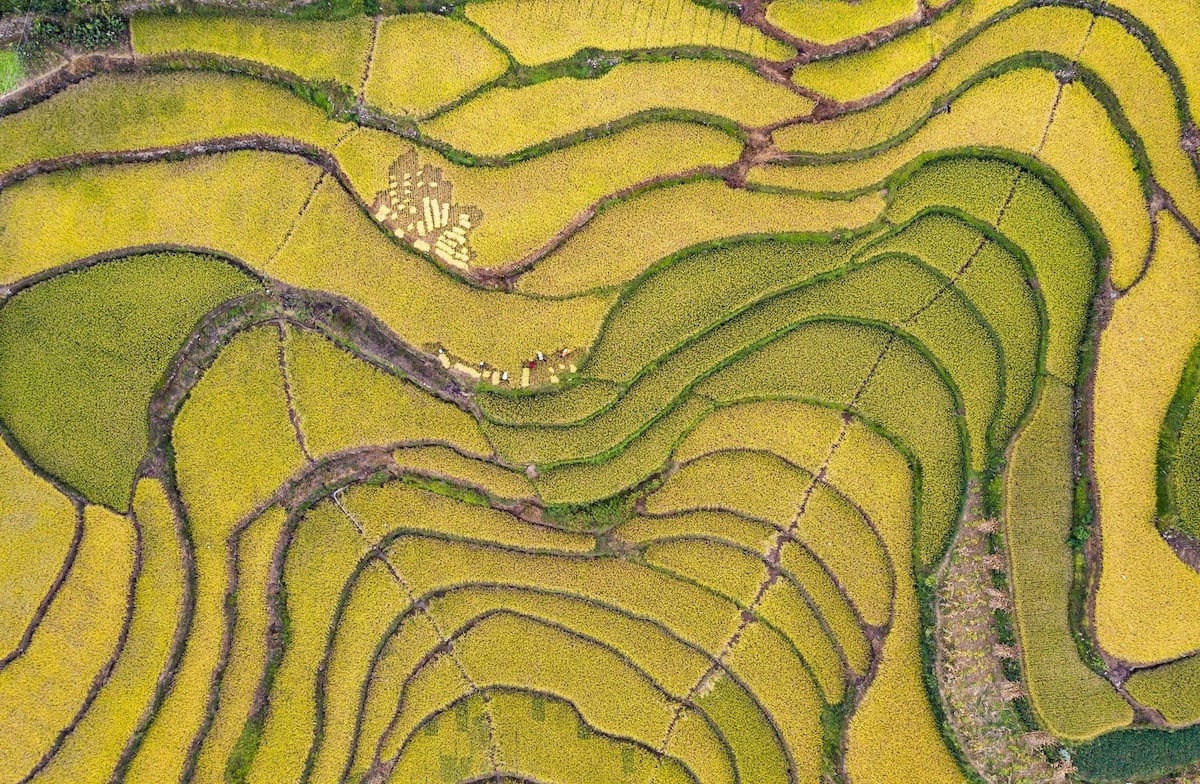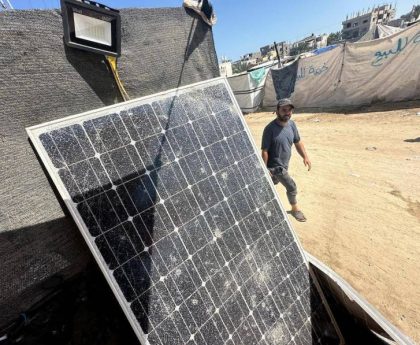Solar farms along a desert highway in the Tarim Basin, north-west China’s Xinjiang, have been powering wells to extract groundwater and irrigate sand-fixing trees.
The sand-control project supports over 3,100 hectares of “shelterbelt” bordering the Tarim Desert Highway, using wells powered by 86 solar photovoltaic (PV) farms.
Details on the amount of groundwater extracted have not been published. However, research by Xinjiang University published last year found that groundwater is being overexploited in the Tarim Basin, a region with scarce rainfall and limited surface water.
The Tarim Desert Highway was completed in 1995 to transport oil from mines in the desert’s hinterland.
To combat sand erosion around the road, sand-fixing trees were planted and 109 wells were dug between 2003 and 2006, at a cost of CNY 220 million (about USD 40 million).
Two years ago, PV panels replaced diesel to power these wells. The upgrade reduces annual diesel consumption by about 1,000 tonnes and CO2 emissions by 3,410 tonnes, CCTV reported. These farms have generated more than 5 million kilowatt-hours of electricity in the last two years, according to oil and gas producer PetroChina.
In May, the National Energy Administration and National Forestry and Grassland Administration issued a notice on promoting PV-powered sand-control projects in northern provinces such as Gansu, Ningxia, Shaanxi.
According to Xinhua, these projects have multiple benefits. Water needed to clean the PV panels can also irrigate vegetation, and the shade the panels provide conserves moisture for plants underneath. The panels sit on pile foundations that help consolidate the desert sands, Xinhua added.
Along the Tarim Desert Highway project, about 1,500 plants have been grown on the barren land under the PV panels, according to CCTV.
However, the harsh environment can pose challenges for PV power stations. “Sand and dust accumulation on the panels can reduce efficiency by up to 30%, and they need to be cleaned with water frequently, which also increases maintenance costs. Wind and sand abrade and even bury equipment, posing safety risks,” Wang Yankui, the secretary-general of the National Alliance for Sand Control and Sand Industry in Arid Areas, told Xinhua.
Severe shortage of water supply has also been a bottleneck for such projects, as shown in Inner Mongolia. “Water resources in the autonomous region are relatively scarce, and insufficient water-resource carrying capacity has become a constraint on photovoltaic sand control projects,” the government states.
Read Dialogue Earth’s analysis of China’s longstanding afforestation drive and its efforts with Mongolia to reduce sandstorms.
This post was originally published on 3rd party site mentioned in the title of this site






